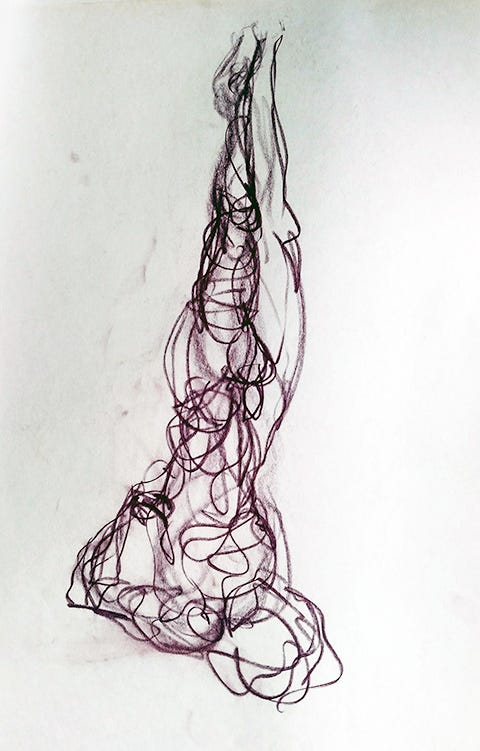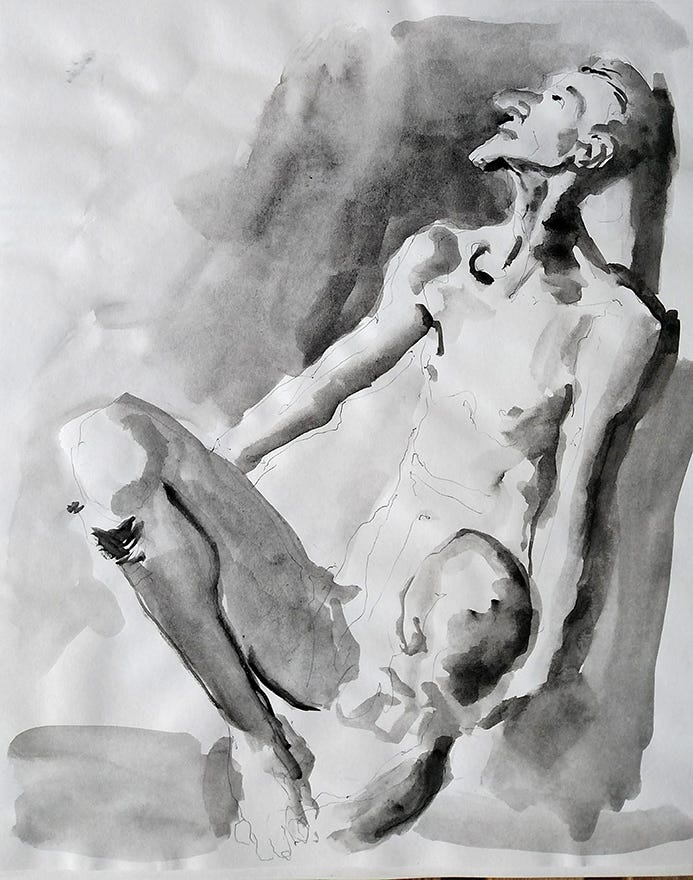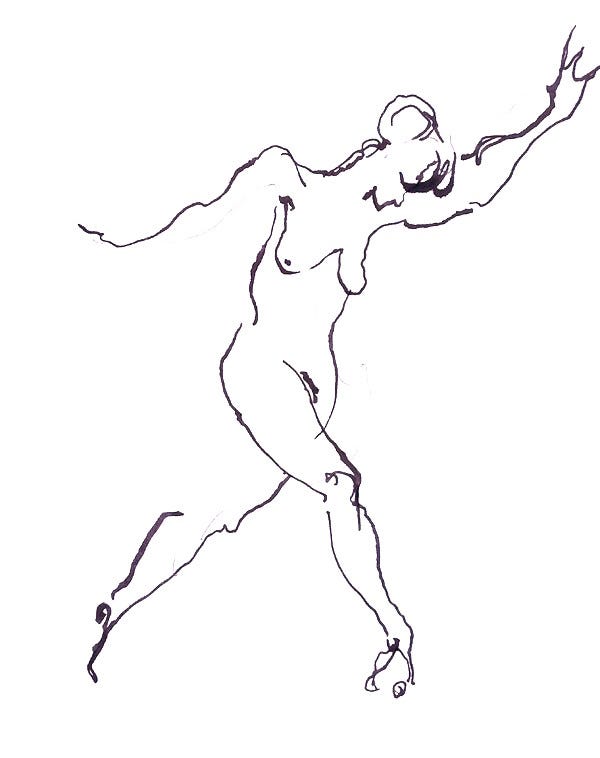
Sometimes I use the Three Pose Approach in figure drawing sessions. In it, you apply three very diverse drawing strategies that may allow you to relate to the pose and ‘get’ the pose onto the page. The intention is to keep ‘reframing’ the drawing experience and achieve fresh insights. The three actual approaches may vary. There are even more than three approaches. But I limit it to three specific strategies in one particular session, Three being a good number — not too much, not too little for one exercise.
The Three Pose Approach is a misnomer just as is Blind Contour, which involves a drawing process in which you truly SEE the thing you are drawing simultaneously while drawing it, with no recourse to memory. Not so blind. There is just one pose BUT it is drawn in three diverse ways.
Here are three that work:
1. The Inside-out approach using a smoky scribble. This is an indirect approach. It combines the use of a fluid, scribbled, haphazard, line moving around through and across the shape and form up and down the limbs, pausing, accenting such bony landmarks as knees and hipbones that punctuate the motion. the line states and restates the action of the pose. The artists’ eyes are animated. They move continually in, roaming, gazing tangentially across The hand keeps up or moves ahead with a unique kind of description. This is the best way to ‘take in’ the pose, not looking at it fixedly or imposing preconceptions. Try not to force the gaze. Instead, let it roam in a relaxed manner. If you do this, what can emerge on the page is a fresh idea of the pose, one that has more life, animation, and emotion and gives the model a specific identity. As the drawing evolves, your perception of the figure, and of the shape of the design on the page is reorganized. In this way, the hand is co-ordinating with the eye and brain to see differently. It can help to draw with the non-dominant hand for at least some of the time.
2. The angled line approach. This involves analysis, patience and bringing a logic and insight to it. There is no copying. Every mark has to be the result of a conscious, measured decision based on an analysis of form and the direction of the form in space. question everything.
3. The media approach: let’s use an unfamiliar tool, and then see what happens. What does it express? How does the unfamiliar feel of it and to some degree the lack of control help/hurt? Look to the pose primarily for its narrative potential and find an approach to using this new tool that maximizes it. Care less about proportion. Tape a stick of soft charcoal to a two-foot-long stick from the garden centre.

The key thing is, each of these approaches is of value when properly applied. But the juxtaposition of the three strategies one after another can produce insights through contrast. From student to student, it’s not always predictable which one will most successfully capture the true character of the pose.
I suggest that you can learn something from the Three Pose Approach and apply it to ideas or problems in daily life. Looking at a problem or situation this way means not forcing it, letting the answers come to you (inside out), or using a specific analysis tool (angled line), possibly by asking more and more questions. Or like changing the media, change the physical ‘environment’ you are experiencing the problem in. This is, again, a kind of reframing. After all, what we do in one creative context may have something to do with how we approach things in other contexts.

With drawing the figure over time, you can fall into a rut. As with anything. Using ingenuity, flexibility, and the resources, most of us have on hand, it doesn’t take much to reframe the situation and get ourselves out of it.
